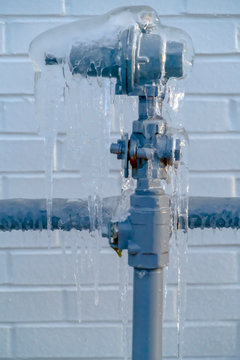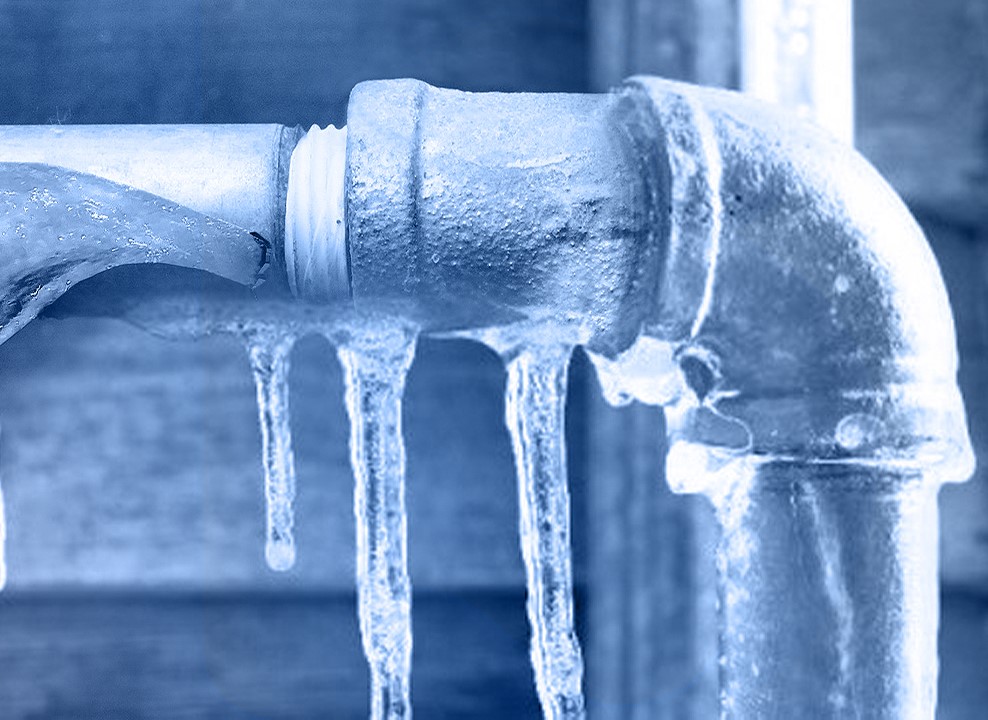Protecting Against Frozen Plumbing in Winter: Professional Advice
Protecting Against Frozen Plumbing in Winter: Professional Advice
Blog Article
On this page further down you will discover a lot of very good news about Winter Plumbing Precautions: Preventing Frozen Pipes.

Cold weather can wreak havoc on your pipes, especially by freezing pipes. Right here's exactly how to stop it from occurring and what to do if it does.
Introduction
As temperatures decline, the danger of icy pipelines increases, possibly causing expensive repairs and water damages. Recognizing just how to prevent icy pipes is critical for house owners in chilly climates.
Avoidance Tips
Insulating prone pipes
Cover pipes in insulation sleeves or utilize warm tape to shield them from freezing temperatures. Focus on pipelines in unheated or external areas of the home.
Home heating strategies
Maintain indoor spaces appropriately heated, particularly locations with plumbing. Open closet doors to allow warm air to flow around pipelines under sinks.
How to determine icy pipelines
Search for lowered water circulation from faucets, uncommon odors or sounds from pipelines, and noticeable frost on exposed pipes.
Long-Term Solutions
Structural modifications
Think about rerouting pipelines away from exterior wall surfaces or unheated locations. Include extra insulation to attics, cellars, and crawl spaces.
Updating insulation
Buy top quality insulation for pipes, attic rooms, and wall surfaces. Appropriate insulation helps keep constant temperature levels and decreases the risk of icy pipes.
Protecting Exterior Plumbing
Garden pipes and outdoor taps
Detach and drain pipes garden hose pipes prior to wintertime. Install frost-proof faucets or cover outdoor faucets with shielded caps.
Understanding Icy Pipes
What triggers pipes to ice up?
Pipelines freeze when subjected to temperature levels below 32 ° F (0 ° C) for prolonged durations. As water inside the pipelines freezes, it expands, taxing the pipe walls and possibly creating them to break.
Risks and damages
Icy pipelines can bring about supply of water interruptions, building damage, and expensive repair services. Ruptured pipelines can flooding homes and trigger substantial architectural damages.
Indications of Frozen Water Lines
Determining icy pipes early can prevent them from bursting.
What to Do If Your Pipes Freeze
Immediate actions to take
If you think frozen pipelines, maintain faucets open to relieve stress as the ice melts. Utilize a hairdryer or towels taken in hot water to thaw pipes slowly.
Final thought
Avoiding icy pipelines requires aggressive procedures and quick feedbacks. By comprehending the causes, indications, and preventive measures, house owners can protect their pipes throughout cold weather.
6 Proven Ways to Prevent Frozen Pipes and Protect Your Home
Disconnect and Drain Garden Hoses
Before winter arrives, start by disconnecting your garden hoses and draining any remaining water. Close the shut-off valves that supply outdoor hose bibs and leave the outdoor faucet open to allow any residual water to drain. For extra protection, consider using faucet covers throughout the colder months. It’s also important to drain water from any sprinkler supply lines following the manufacturer’s directions.
Insulate Exposed Pipes
Insulating your pipes is an effective way to prevent freezing. Pipe insulation is readily available at home improvement stores and is relatively inexpensive. Pay close attention to pipes in unheated areas such as the attic, basement, crawl spaces, or garage. Apply foam insulation generously to create a buffer against the cold. You can also wrap your pipes in heat tape or thermostat-controlled heat cables for added warmth.
Seal Air Leaks
Inspect your home for any cracks or openings that could let in cold air. Seal any holes around the piping in interior or exterior walls, as well as the sill plates where your home rests on its foundation. Additionally, make sure to keep your garage door closed unless you’re entering or exiting. Leaving it open creates a significant air leak that can lead to frozen pipes.
Allow Warm Air Circulation
During cold snaps, it’s essential to allow warm air to circulate evenly throughout your home. Leave interior doors ajar to promote better airflow. Open kitchen and bathroom cabinets to help distribute heat consistently around the rooms. If you have small children or pets, be sure to remove any household chemicals or potentially harmful cleaners from open cabinets for safety.
Let Faucets Drip
A small trickle of water can make a big difference in preventing ice formation inside your pipes. When temperatures drop significantly, start a drip of water from all faucets served by exposed pipes. This continuous flow helps prevent the water from freezing. Additionally, running a few faucets slightly can relieve pressure inside the pipes, reducing the chances of a rupture if the water inside does freeze.
https://choateshvac.com/6-proven-ways-to-prevent-frozen-pipes-and-protect-your-home/

We hope you enjoyed reading our part on How To Avoid Freezing Pipes. Thanks for spending some time to read our blog post. If you please set aside a second to promote this entry if you appreciated it. We thank you for reading our article about Winter Plumbing Precautions: Preventing Frozen Pipes.
Contact Us Now Report this page